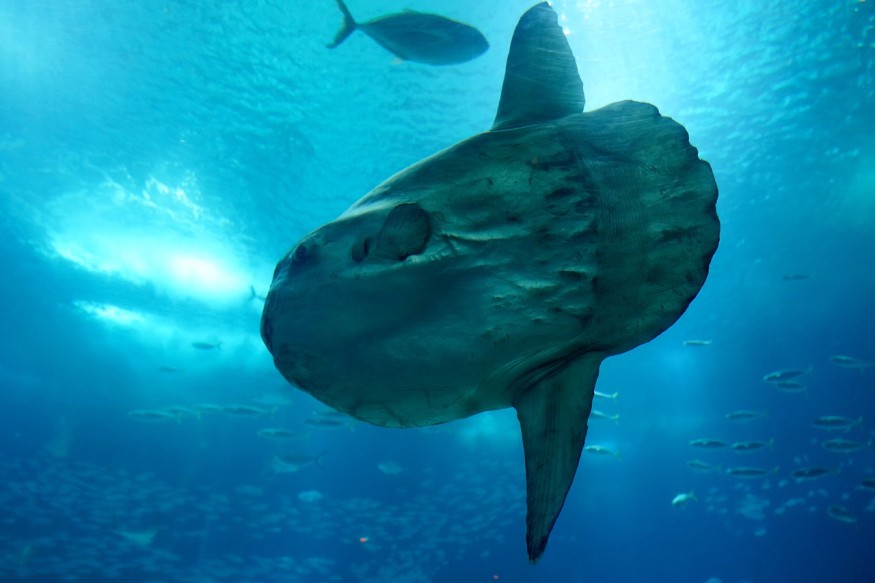An ocean sunfish was caught 'mimicking' a shark in the waters off the California coast last week. It might be scary at first since its swimming looked like a shark from the movie "Jaws" with its fin sticking to the water's surface. However, members of the National Oceanic and Atmospheric Administration's Office of National Marine Sanctuaries confirmed it was only a mola mola, the world's largest bony fish.
The said sunfish behavior has been linked to ecological mimicry, a defense mechanism used by animals to protect themselves by impersonating another species of the Animal Kingdom to scare off any predators or threats. Yet, the recent shark impersonation seemed to have no real effect to fend off the sunfish's predators except just scaring human observers at first.
Ocean Sunfish Impersonates Shark

On May 17, the NOAA Office of National Marine Sanctuaries Facebook page posted a picture of the ocean sunfish which appears to be mimicking a shark in Greater Farrallones National Marine Sanctuary. In the image, it can be seen that the mola mola looks like a shark while its head and fin are slightly visible from the water.
The photo was only taken by coincidence but it makes the sunfish to resemble like a shark, Jennifer Stock, spokesperson for the marine sanctuary, told Newsweek. Stock clarified to the digital media site that mimicking a shark is not something the sunfish typically do and there was no ecological mimicry occurring.
World's Largest Bony Fish
Being the world's largest bony fish, the ocean sunfish can grow even bigger than an average human and some shark species.
In October 2022, The New York Times reported the discovery of a giant 10-foot ocean sunfish weighing over 6,000 pounds, comparing it around the weight of a Chevrolet Suburban car.
The mola mola are also foraging predators that will eat different kinds of food available to them. Still, their preferred prey are the jellyfish, according to the non-profit conservation organization Oceana.
Ecological Mimicry
As mentioned earlier, ecological mimicry involves the use of certain biological features or morphological appearances to impersonate another animal. Such defense mechanism is in addition to other well-known defense or predatory tactics like camouflage, which pertains to changing one's color or appearance relative to the environment.
In May 2013, a study was published in the journal Trends in Ecology & Evolution, researchers define mimicry is the resemblance or similarity of one organism (the mimic) to another organism (the model) that improves the mimic's fitness through its perceptive impact on the behavior of a third party.
Another type of animal mimicry is called Batesian mimicry. According to the North Dakota Game and Fish Department, monarch and viceroy butterflies serve as an example of Batesian mimicry, which pertains to a species mimicking the warning signals of another species without needing to change characteristics completely.
© 2025 NatureWorldNews.com All rights reserved. Do not reproduce without permission.





